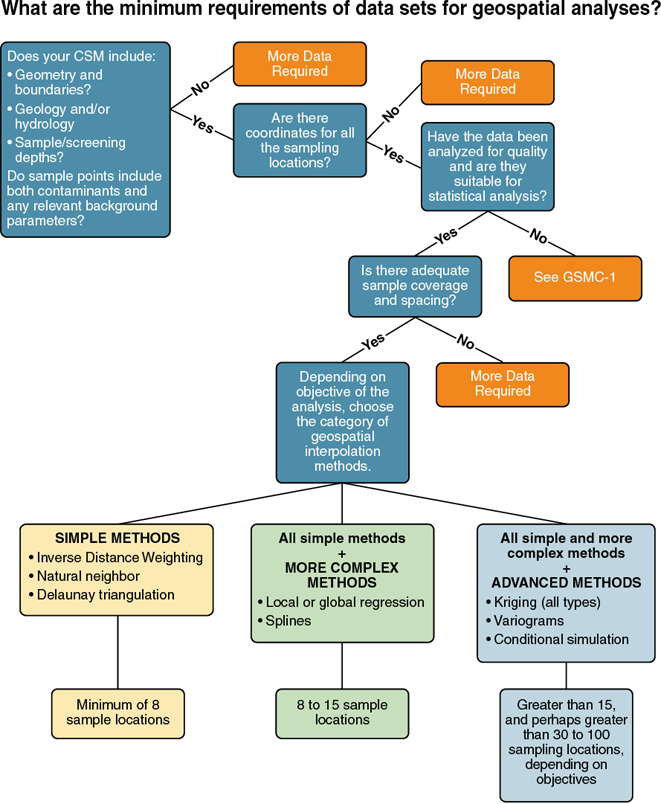Data Requirements for Geospatial Analysis
Data for geospatial analysis are tied to specific locations and used to inform spatial or spatio-temporal analysis (for example, mapmaking). Consequently, the minimum requirements of the data set for geospatial analysis are different and usually more stringent than those for other analyses. Accurate mapping generally entails more data than, for instance, simple monitoring along a compliance boundary. It is thus critical to check these minimum data requirements prior to conducting a geospatial analysis. If these requirements cannot be met, you may need to obtain additional data or site information, or choose a different geospatial method.
Figure 1 can be used to determine whether the data set is suitable for a geospatial analysis. The information presented in this figure is a general guideline, you must determine whether the site-specific data are sufficient for any specific analysis to support the question being investigated. The basic requirements for geospatial analysis are listed in Table 1.
Table 1. Minimum requirements of data sets for geospatial analysis
| Requirement | Description |
|---|---|
| CSM |
The CSM must include the following:
|
| Data locations |
|
| Site monitoring or cleanup goals |
|
| Data suitable for statistical analysis |
|
| Data of adequate spatial coverage for the area to be mapped. |
|
| Adequate number of data |
|
| Sampling history |
|

Figure 1. Approach to determine minimum data set requirements for geospatial analysis.
Note: This figure should be used along with the information in Table 1.


